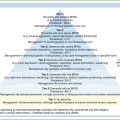Chapter 4 MODELS OF MENTAL HEALTHCARE AND ORGANISATIONAL ISSUES
INTRODUCTION
Although there is evidence for the effectiveness of older persons’ mental health services (OPMHS) (Draper 2000), the most effective components of such services have not yet been clearly identified. There are many different ways to deliver community mental health services to older people. This chapter covers models of care delivery and associated organisational issues. It assumes the presence of a national health service with universal access.
AREA-BASED SERVICES
In more fortunate districts, acute inpatient mental health facilities for older people have been purpose-built and are co-located with geriatric medical services. More commonly, however, older people with mental health problems are admitted to general adult inpatient wards. This is often a rather unsatisfactory situation because the needs of younger people with, for example, acute psychosis are quite different from the needs of older people with, for example, severe depression. Because of their physical frailty, older people are vulnerable to falls. Some older people with cognitive impairment are prone to wander into other people’s rooms, precipitating retaliatory assaults. In addition, older inpatients often require substantially more physical nursing care and more medical interventions, mandating a quite different staffing mix. Wards with mixed groups of younger and older people often have difficulty providing for the needs of each group.
Because community mental health services for older people are a relatively new phenomenon in most places, their implementation has generally been planned. However, some districts have autonomous community-based services and others have integrated hospital and community services. This particular issue is dealt with in more detail in Chapter 5.
INTEGRATED HOSPITAL AND COMMUNITY SERVICES
One major advantage of integrated services is the early involvement of community case managers in the care of inpatients who have not previously been case managed and the continuing involvement of community case managers where the person has been admitted from their care. Early engagement of case managers during the inpatient phase of clinical care can greatly facilitate discharge planning and allow this to begin at the time of admission.
Australian experts (Snowdon 1993, Snowdon et al 1995) have recommended the provision of eight acute inpatient beds per 100,000 of the total population for older people with mental health problems, and British experts (Royal College of Physicians and Royal College of Psychiatrists 1989) have recommended the provision of 15 beds per 100,000 total population. However, planning documents in Australia generally specify the provision of approximately four acute inpatient beds per 100,000 of the total population for older people with functional mental health problems. They usually make no allowance for inpatient mental health beds for older people with dementia associated with severe behavioural and psychological symptoms. The net effect is that districts often have too few acute inpatient beds for older people with mental health problems, including dementia. Similarly, planning documents often specify approximately four full-time equivalent (FTE) older persons’ community mental health staff per 100,000 of the total population, rather than a number based on the number of older people and the likely prevalence of mental health problems.
Stay updated, free articles. Join our Telegram channel

Full access? Get Clinical Tree





